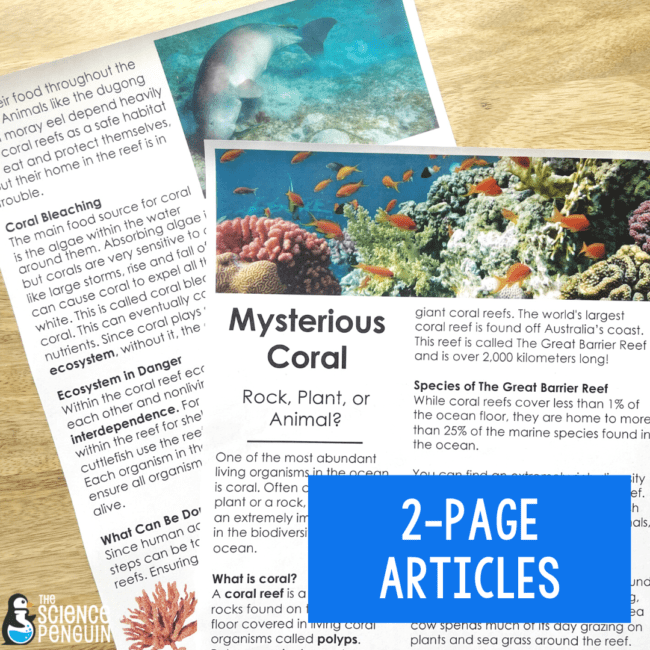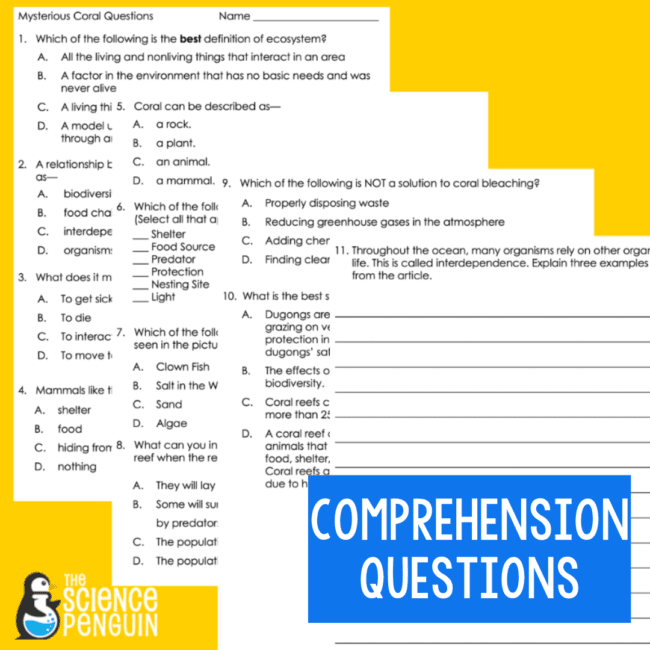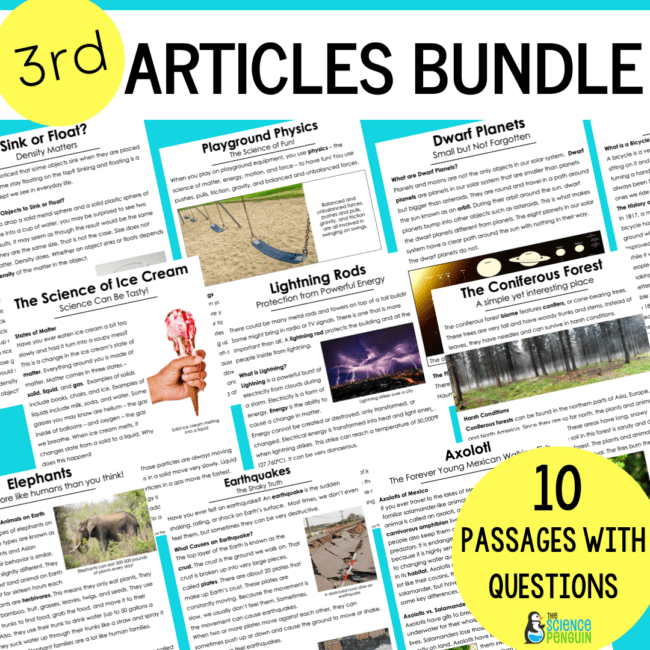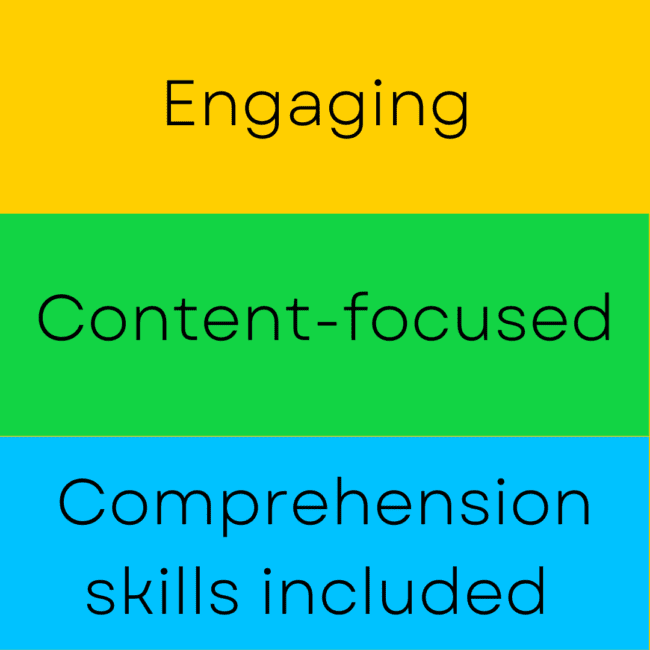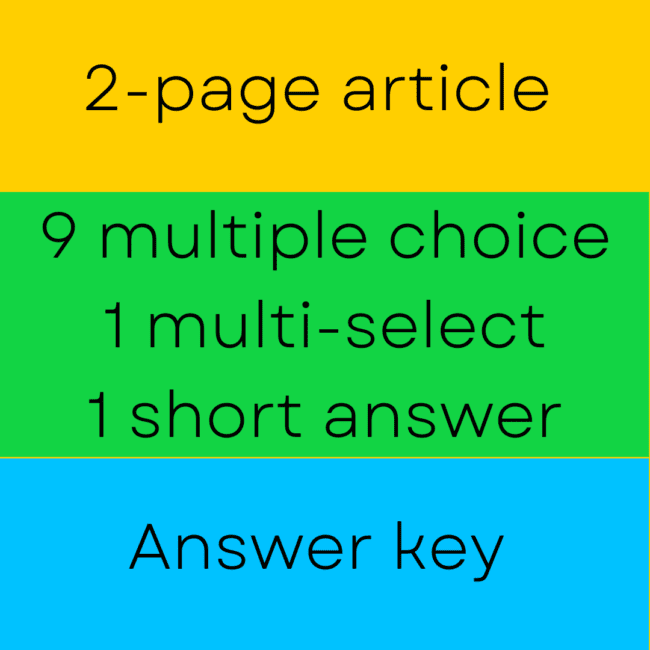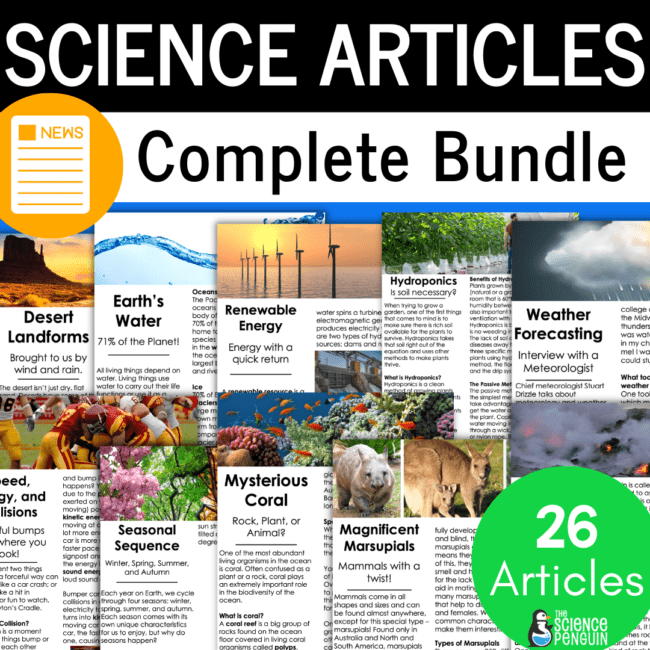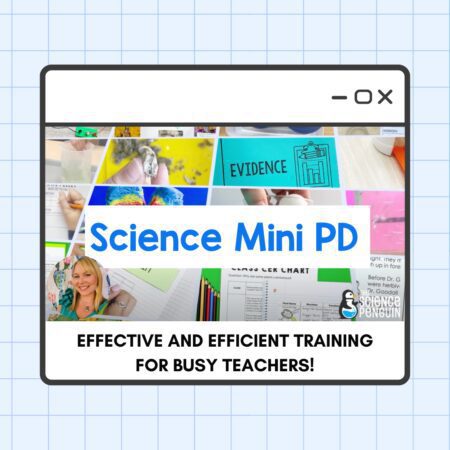
Whenever I transitioned from being a 3rd grade teacher who taught all subjects (including ELAR) to just 5th grade science, it shifted my instructional day.
I had devoted so much time to reading instruction to guide my students toward becoming successful readers that l wanted to continue to see the same growth and success with my students in science.
Although I was not held accountable for my students in reading, I knew how beneficial exposure to texts that connect with content was necessary due to the nature of reading abilities I would encounter.
I also knew my students would take assessments on science topics involving comprehension of text and material at the state level.
With this in mind, we have developed high-quality authentic texts that integrate science and reading to build knowledge AND help students practice their comprehension skills.
Let’s take a closer look!
What do the studies show?
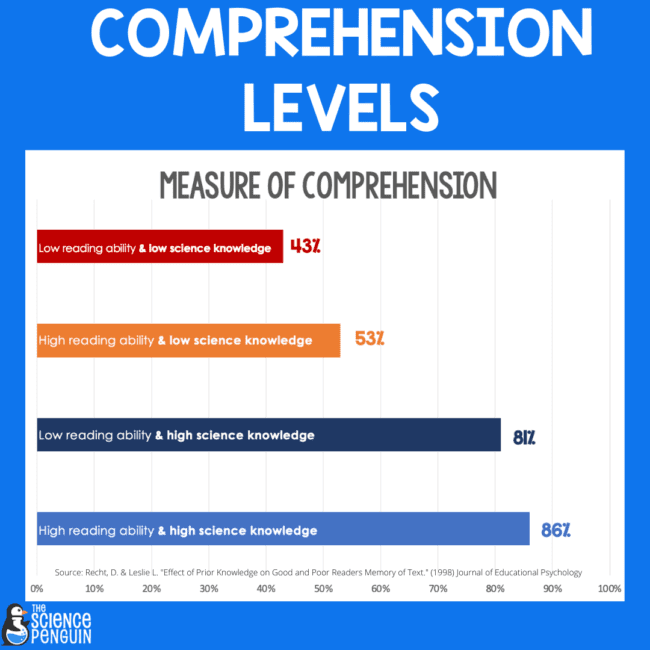
- Evidence has shown students that have high knowledge of science will have higher levels of comprehension.
- Students that have low knowledge of science will have lower levels of comprehension.
- When content is is aligned with other subjects, this ensures a level playing field when assessing comprehension.
Q: What grade levels do you have available for the Science Articles?
A: Our Science Articles are available for 3rd, 4th, and 5th grade.
A: Each Science Article includes a 2-page passage with an Answer Key.
For 3rd grade, they include 6 multiple-choice questions and 1 short answer response.
For 4th and 5th grade, they include 9 multiple-choice, 1 multi-select, and 1 short-answer response.
Q: Do you have the Science Articles as a bundle?
A: Yes, our 3rd grade Science Article bundle includes 10 passages, and our 4th and 5th-grade bundle includes 26 passages.

Q: What Comprehension Skills will my students use?
A: 3rd Grade – The questions require students to look back at the text, determine the meaning of domain-specific vocabulary, identify the author’s purpose, refer to informational text features, find the main idea, and truly understand the science material presented in the article.
4th-5th Grade – The questions require students to look back at the text, make inferences and connections, determine the meaning of domain-specific vocabulary, identify text structure, refer to text features, summarize, find the main idea, and truly understand the material presented in the article.
Q: When should these articles be used?
A: There are several options for utilizing them, and here are a few ideas you could use!
During your ELAR block: When I taught 3rd grade, it was sometimes challenging to fit in a more extended science block due to Math and Reading needs.
To counteract the loss of time in science, use these passages to deepen the knowledge of science content with your students, and they continue to practice their comprehension skills.
During Intervention/Enrichment time: When I worked with my students at my small group table, I wanted the rest of my class to work on something meaningful and purposeful.
This would be an excellent option for your students to work independently or in pairs.
You’ll then be able to focus on reaching students based on their individual needs.
Many times since I didn’t teach ELAR, but it incorporated comprehension skills, I would grade them and share the grades with my ELAR teacher.
Substitute Lesson: Another option would be using the passages as something my students could do if I had a substitute.
They were easy to copy, and my students could engage in a topic we were currently learning about or spiral back concepts throughout the year.
Homework: Assigning homework wasn’t something I often did, but this would be an option to instill science content and comprehension skills.
It also gives your families a glimpse of the current topics you have taught or are teaching.
If assigning this for homework, be mindful of students who may not have support from home.

3rd Grade Article Topics
See all 10 articles as a bundle deal: 3rd Grade Science Articles Bundle
1. Axolotl
This article describes a coniferous forest ecosystem, cones, plants and ecosystem interactions.
This article describes a coniferous forest ecosystem, cones, plants and ecosystem interactions.
3. Elephants
This article explains how elephants survive by living together in groups.
This article uses examples to describe why some objects sink while other float due to density.
This article describes how changing states of matter (melting and freezing) are related to making ice cream.
This article explains how gravity, friction, balanced forces, and unbalanced forces influence how playground equipment works.
7. Bicycles
This article explains the history of how bicycles were developed and how they work.
This article explains what a lightning rod is and how it works and how to stay safe during severe weather.
9. Earthquakes
This article describes the causes and effects of earthquakes, the Moment Magnitude Scale, and safety precautions.
10. Dwarf Planets
This article describes dwarf planets including Pluto.
See all 10 articles as a bundle deal: 3rd Grade Science Articles Bundle
4th-5th Grade Article Topics
See all 26 articles as a bundle deal: 4th-5th Grade Science Articles Bundle
1. Desert Landforms:
This article describes desert landforms created by weathering, erosion, and deposition.
2. Tectonic Plates:
This article describes Earth’s shifting continents and plate movement.
This article describes how the Hawaiian islands formed, the types of igneous rock, and the types of volcanoes.
4. Fossils:
This article describes fossils found in unexpected places and evidence of past environments.
5. Water on Earth:
This article describes the distribution of water on Earth, fresh water sources, salt water, ice, and groundwater.
This article describes how we can predict the weather using tools, weather maps, and meteorology as a career.
7. Renewable Energy:
This article describes renewable natural resources used for energy like hydroelectric energy, solar energy, and wind energy.
8. Stars:
This article describes what a star is and its luminosity and identifies notable stars, including our Sun.
9. Moon Phases:
This article describes our moon’s characteristics, explains the moon’s phases, and provides information on missions to the moon.
10. Seasons:
This article explains why Earth experiences seasons, equinoxes, and solstices.
11. Micro-creatures:
This article describes characteristics of tiny organisms like rotifers, tardigrades, copepods, and dust mites.
12. Tiny Ecosystems:
This article describes 3 different tiny ecosystems: a fallen log, a tree hole, and a tide pool.
13. Plants in Motion:
This article explains different ways plants move in response to stimuli.
This article explains what a coral reef is, the organisms that live there, and how coral bleaching negatively impacts the ecosystem.
15. Aquarium Visit:
This article is as persuasive as it is informational to give you an overview of the New England Aquarium.
This article compares and contrasts complete and incomplete metamorphosis.
This article explains different types of marsupials and their habitats.
18. Hydroponics: Is soil necessary?:
This article explains how hydroponic farming can help plants meet their needs for growth and photosynthesis.
19. Physical Properties of Matter:
This article describes the physical properties of matter, including magnetism, relative density, solubility, physical state, volume, and conductivity.
This article describes physical changes and introduces the Law of Conservation of Matter.
21. Waves:
This article describes sound waves, light waves, and seismic waves.
22. Energy Conversions:
This article describes common energy transformations, including mechanical, sound, electrical, and chemical.
23. Light:
This article explains how light travels and interacts with matter.
24. Collisions, Speed, and Energy:
This article explains the transfer of energy due to collisions.
25. Gravity in Space:
This article describes the effects of gravity on Earth and in the universe.
26. Force and Motion Investigation:
This article presents an example of an investigation of force using the scientific method.
See all 26 articles as a bundle deal: 4th-5th Grade Science Articles Bundle
Access the Free Resource Library
This is an exclusive library of 40+ science printables, labs, activities, and games for grades 3-6. Sign up and check your email for immediate access.

